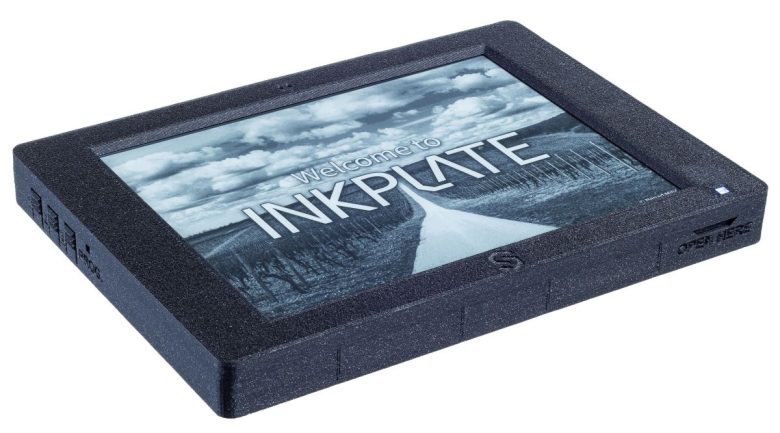E Ink displays offer a paper-like viewing experience that makes them popular for eBook readers and digital signage applications. You can view an E Ink display using nothing but ambient light and they only consume power when changing the image on the screen – a static image can be displayed indefinitely.
But E Ink displays typically have much slower screen refresh rates than LCD or AMOLED displays, making them a poor fit for applications that involve video or animation. You can increase refresh rates on devices with the proper hardware, but you usually have to sacrifice image quality for speed on E Ink monitors and tablets. But there are some circumstances where that trade-off may be worth it, and the makers of the InkPlate line of hacker-friendly E Ink display kits has embraced those trade-offs in a new model called the InkPlate 6 MOTION. It’s available for pre-order for $169 and up through a Crowd Supply crowdfunding campaign, and expected to ship in October, 2024.
The InkPlate Motion combines a 6 inch, 1024 x 758 pixel display with a board featuring a 32-bit STM32H743 microcontroller and an ESP32-C3 co-processor.
The screen is a black and white display with a pixel density of 212 pixels per inch and support for either true black and white mode or 4-bit grayscale with up support 16 shades of gray.
What makes this model different from other members of the InkPlate lineup is that there’s support for 91 ms partial screen refreshing, allowing you to display motion graphics at up to 11 frames per second.
That’s not really fast enough for completely smooth graphics – most modern LCD and AMOLED screens support at least 60 Hz refresh rates, and many go much higher than that. But it still beats the 500 ms response time for a full screen refresh rate in black and white mode or the 800 ms refresh rate in 4-bit grayscale mode.
At 11 fps, graphics should look smoother when you’re scrolling through content or displaying animations, which widens the possible use cases for this sort of kit.
Other features include support for WiIF and Bluetooth, a microSD card reader for storage, a USB-C port for power and data, support for a 3.7 volt Li-ion battery, accessible GPIO pins, a rotary dial, programmable buttons, and a number of sensors including temperature, humidity, gyroscope, accelerometer, motion/gesture, and proximity sensors.
via CNX Software



